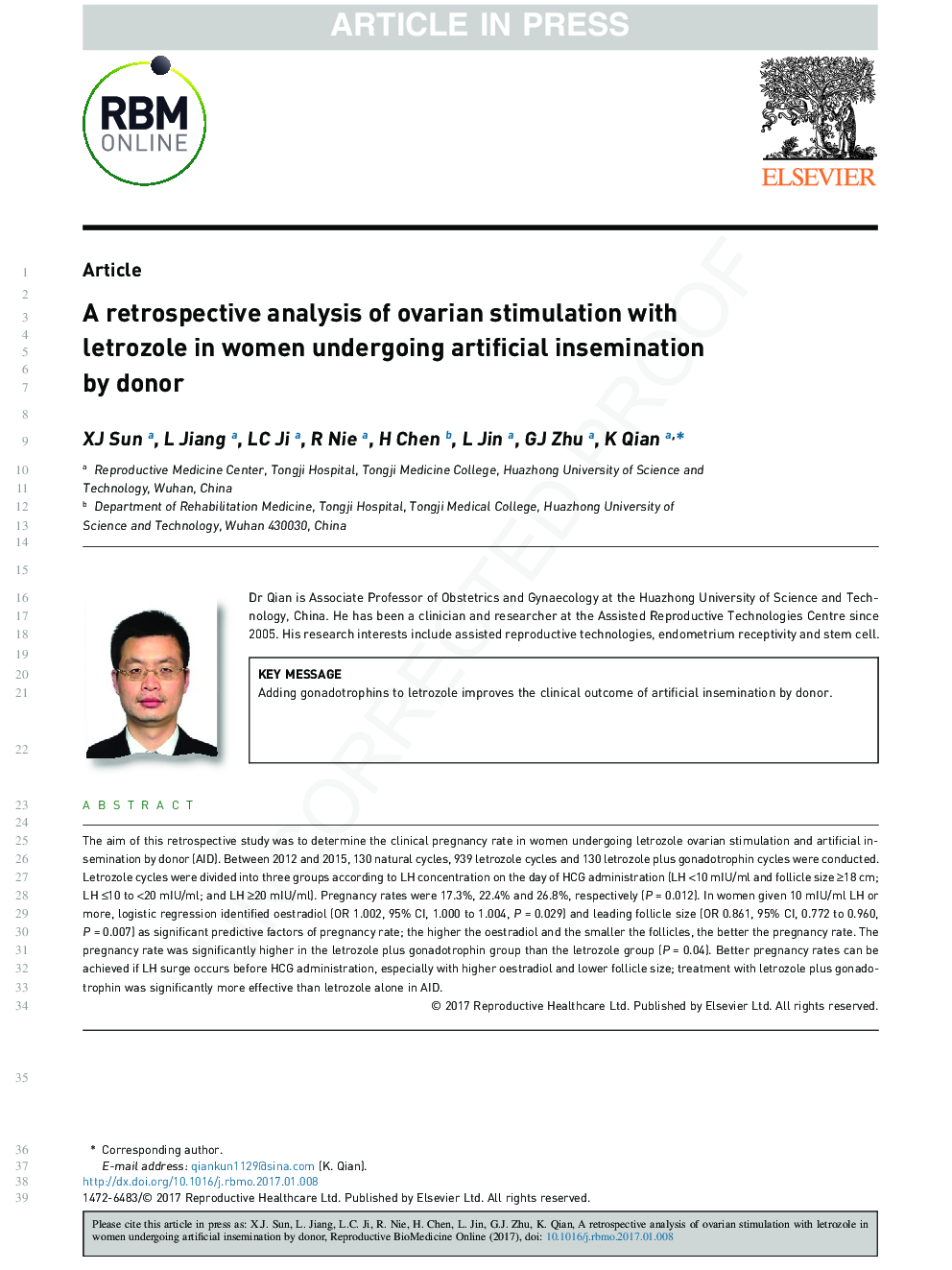| Article ID | Journal | Published Year | Pages | File Type |
|---|---|---|---|---|
| 5696727 | Reproductive BioMedicine Online | 2017 | 7 Pages |
Abstract
The aim of this retrospective study was to determine the clinical pregnancy rate in women undergoing letrozole ovarian stimulation and artificial insemination by donor (AID). Between 2012 and 2015, 130 natural cycles, 939 letrozole cycles and 130 letrozole plus gonadotrophin cycles were conducted. Letrozole cycles were divided into three groups according to LH concentration on the day of HCG administration (LH <10 mIU/ml and follicle size â¥18âcm; LH â¤10 to <20 mIU/ml; and LH â¥20 mIU/ml). Pregnancy rates were 17.3%, 22.4% and 26.8%, respectively (P = 0.012). In women given 10 mIU/ml LH or more, logistic regression identified oestradiol (OR 1.002, 95% CI, 1.000 to 1.004, P = 0.029) and leading follicle size (OR 0.861, 95% CI, 0.772 to 0.960, P = 0.007) as significant predictive factors of pregnancy rate; the higher the oestradiol and the smaller the follicles, the better the pregnancy rate. The pregnancy rate was significantly higher in the letrozole plus gonadotrophin group than the letrozole group (P = 0.04). Better pregnancy rates can be achieved if LH surge occurs before HCG administration, especially with higher oestradiol and lower follicle size; treatment with letrozole plus gonadotrophin was significantly more effective than letrozole alone in AID.
Related Topics
Health Sciences
Medicine and Dentistry
Obstetrics, Gynecology and Women's Health
Authors
X.J. Sun, L. Jiang, L.C. Ji, R. Nie, H. Chen, L. Jin, G.J. Zhu, K. Qian,
